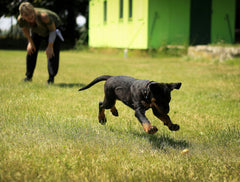
If you have a cat as a pet, are thinking about getting a cat as your first pet, or you are just interested in cats, there are so many different things that you can learn about them. Some of the things that many people learn about cats are their personality, dietary needs, playfulness, breed, and other similar things.
However, have you ever thought about cat paws? Cat paw pad, just like cat whiskers, has an interesting anatomy. The parts of a cat’s paw help them to jump, walk, stand, and move around. Every cat has its own fingerprints. In fact, they are even able to open an iPhone 5S with the fingerprint sensor.
Cat Paw Anatomy

Whether you are wondering about the anatomy of a cat’s front paw or their back paws, it is all very interesting. Did you know that cats have 18 toes? They have 4 toes and 1 dewclaw on both of their front paws. They also have 4 toes on both of their back paws. Their dewclaw is like an inner toe. It doesn’t touch the ground at all. Certain cats have more than 18 toes. Usually, if this happens, the extra toes are on their front paws. Cats with extra toes are known as polydactyl.
When looking at cat paw pad anatomy, there are skin pads. These are very tough. They help to keep the feet of the cat protected when they walk on rougher surfaces. However, these pads are also able to tell the difference between cold and hot surfaces. They can detect other things, as well. In fact, these skin pads are able to help cats evaluate their prey.
On the rear and front paws of a cat, there are retractable claws. Most of the time, the ones that are on the cat’s back paws, are duller than the ones that are on their front paws. Cats need their claws to help improve their overall well-being. Cats will use their claws for hunting, itching, climbing, self-defense, and for gaining more traction.
If you have a cat in your home, part of caring for your cat is keeping their claws healthy and trimmed. If they get too sharp, they could get caught on things and break. In addition, if they aren’t cared for and an injury occurs to their claws, it could become infected. Without treatment, this could be detrimental to the cat.
The Way Cats Walk

The anatomy of a cat’s front paws and back paws is what helps them to walk. Humans will walk with the balls and heels of their feet. However, cats will walk on the balls and tip of their toes. This is called digitigrade walking. Every aspect of the way that a cat walks is to help them move more quietly.
Have you ever heard your cat walk, especially when compared to a dog, for instance? You don’t hear your cat walk while your dog can be very loud when walking across the floor.
Scent and Sweat Glands

It might interest you to know that the paws on a cat have glands between the toes. These glands secrete a scent that is unique. Cats will use their paw to help them mark their territory. If your cat starts to scratch something, such as a tree or a post, they are secreting some of their scent on that item. They are basically claiming it as their own.
There are sweat glands in cat paws, as well. These glands are there to help a cat regulate their own temperature. However, if your cat is anxious, stressed out, or scared, these glands will also secrete some sweat.
This is one of the parts of a cat’s paw that is very important. As a cat owner and as part of cat care, is important to know how to care for your pet. You need to know whether they are healthy and whether their paws are working correctly. Sometimes cats will have issues with their glands and need a veterinarian to care for these issues.
Colors of Paw Pads

Cats have the same colored coat as they do skin. If your cat has a solid color cat, their paw pad will probably be the same color as their coat. If your cat has a multi-colored coat, they might have paw pads that are any color from black to pink. Their paw pads might even be multi-colored, as well.
Proper Care for Cat Paws

As previously mentioned, the parts of a cat’s paw are very important. As a cat owner, you will need to properly care for their paws. While your cat will likely groom itself, every once in a while, you should also check their paws to ensure they are clean. You should also trim up the nails on your cat’s paws regularly. This will help them to stop leaving scratch marks on things. It will also help to keep their paws and nails healthy, too.
Another tip for caring for your cat’s paws is to only use natural chemicals on your household floors. Cats can ingest harmful chemicals when licking themselves.
Having a cat as a pet can be wonderful. However, it is important to make sure their paws, pads, glands, and nails are all well taken care of. By making sure that your cat's paws are healthy, you are increasing their chances of having better longevity and spending many more wonderful years with you.
Why do cats knead their paws?
How many paws does a cat have?
How to clean cat paws?
Check out our blog and follow me on LinkedIn to stay up-to-date!





Comments
I want to engineer or a prosthetic thumb for my kittens pause so that he will naturally grow into controlling the thumb